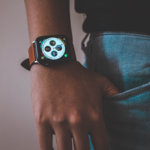Prof. Ernst Kruijff: Move. Search. Explore. Manipulate.
In this talk, I will look more closely at different predominantly audio-tactile interfaces to enhance interaction performance with 3D environments. In particular, I will cover systems that look into enhancing the feeling of self-motion and situation awareness (move), improve the handling of augmentations in narrow field of view augmented reality displays (search), provide cues to ease the exploration and understanding of complex 3D scenes (explore) and extend both 2D and 3D systems with audio-tactile and force cues to improve user performance and experience (manipulate). These topics cover the range of research performed in the 3DMi group at the Institute of Visual Computing.
Bio:
Ernst Kruijff Dr. Kruijff is an interim Professor for Computer Graphics and Interactive Systems at the Institute of Visual Computing, Bonn-Rhein-Sieg University of Applied Sciences. He is also adjunct professor at SIAT-SFU in Canada. For almost two decades, his research has focused at the human-factors driven analysis, design and validation of multisensory 3D user interfaces. His research looks at the usage of audiotactile feedback methods to enhance interaction and perception within the frame of AR view management, VR navigation and hybrid 2D/3D mobile systems.
Prof. Thad Starner: User-centered Design of Head Worn Displays
Reality-replacing AR systems are promoted in film and science fiction, but when are they actually desirable? In this talk I will present use cases for wearables that range from currently successful implementations to speculative research. I will argue that fashion, weight, eyebox, speed of access, social perception, and perceptions of safety are more important than spatial resolution and field-of-view for the many types of on-the-go AR. However, I will also examine the case for large field-of-view systems, which have provable advantages when users are solving complex spatial tasks. In dispelling some of the myths about head worn displays, I hope to make it easier for entrepreneurs and application designers to choose the right system for the task.
Bio:
Thad Starner is a Professor of Computing at Georgia Tech and a Technical Lead on Google Glass. In 1990, Starner coined the term "augmented reality" to describe the types of interfaces he envisioned for the future, and he has been using a head worn display as part of his daily life since 1993. Recently, Thad has been creating wearable computers to help working dogs communicate with their handlers and marine mammalogists conduct two-way communication research with wild dolphins. Dr. Starner has produced over 600 papers, presentations, and patents on his research and was elected to the CHI Academy in 2017.
Dipl. Ing. Granit Luzhnica: Leveraging Optimisations on Spatial Acuity for Conveying Information through Wearable Vibrotactile Displays
This thesis investigates the use of spatial encoding of information by leveraging the spatial acuity of the simulated locations. Moreover, informed by numerous stud- ies on the limitations, perception properties and resolution of the skin, it takes the tasks of designing encoding techniques that avoid as much as possible the drawbacks of the low resolution of the skin or in some cases it leverages them for encoding in- formation. It first proposes overlapping spatiotemporal patterns as an efficient way of encoding discrete abstract symbols and meanings (e.g. letters of the alphabet), which are optimised to deliver good identification accuracy and allow constructing very fast speed messages. The patterns leverage the sensitivity of locations in or- der to prioritise the activation of actuators which in turn increases the perception and identification of such patterns. Furthermore, it investigates body locations for suitable for conveying information using wearable displays. Additionally, it investi- gates conveying of complex messages (e.g. words) by combining two or more simple abstract symbols in a series. It identifies problems with such a conveying of sim- ple discrete and compounds messages, and it proposes methods to overcome them. Additionally, it proposes and evaluates interaction methods for navigating through complex messages. Besides encoding discrete symbols, this thesis investigates con- veying continuous values (e.g. continuous numbers) using phantom sensation. It proposes sensitivity adjusted perpetual models which predict more accurately the perception of the user and thus result in a lower error of decoding the encoded value.
Bio:
Granit is a PhD candidate at the Institute of Interactive Systems and Data Science, Graz University of Technology. His research concentrates on proposing and studying methods to communicate information encoded in vibrotactile messages.

